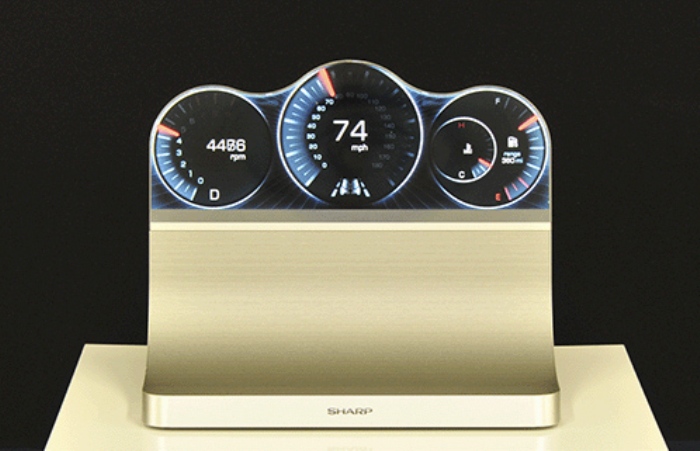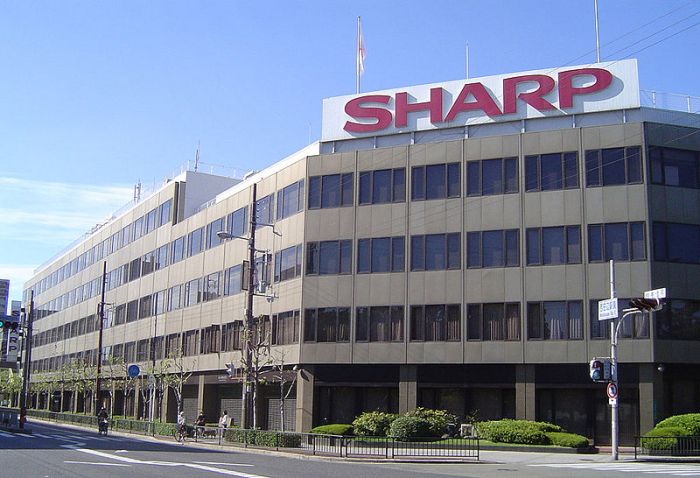New Display Technology from Sharp Paves the Way for Free-Form Displays
It’s been more than a decade since mobile phones adopted displays that are limited to parallelograms and quadrilaterals. For many years, we’ve only seen displays that are squares and rectangles. Now, Japanese display maker Sharp is stepping up the game by developing a new circuitry and system that makes it possible to produce displays of any shape.
Sharp is one of the pioneering display makers to offer better display power efficiency through the IGZO panel released a couple of years ago. This time, the company is making it possible to go beyond the restrictions of squarish and rectangular screens. It is still based on its frugal IGZO display technology.
How Different Is It From Conventional Displays?
There are those who would probably be thinking how Sharp’s free-form display can be considered innovative, revolutionary, or different from other displays when it’s still the same old flat display that is only cut into the shape desired. It has to be pointed out that the technology that enables Sharp’s IGZO panel to be cut into different shapes is not the same as what typical displays have.
Sharp’s new free-form IGZO panel features a proprietary circuit design that disperses the gate driver throughout the pixels on the display area. As such, it no longer requires the typical display bezels necessary for accommodating the usual gate driver circuit. This makes it possible to create display shapes or forms that are no longer limited by the need to have a specific bezel size around the display.
Sharp already mentioned this different circuit design when they exhibited the IGZO display in Japan. However, they did not show any actual product that would demonstrate the possibilities that come with the dispersed gate driver design.

Image from the official Sharp press release for the Sharp free-form display (http://sharp-world.com/corporate/news/140618.html)
Applications
Sharp’s demonstration of their new display tech features a display for a car dashboard. It certainly is well beyond the standard rectangular display we have become accustomed to with our TV, desktop and laptop computer monitors, camera displays, tablets, and smartphones. The car dashboard display showcased by Sharp features three connected circles that present the main indicators of a car. It exemplifies the potential of Sharp’s free-form display to be cut with smooth curves and a wider aspect ratio.
When it comes to smartphones or mobile devices, this free-form display technology is expected to make it possible to have near-zero display bezels. It can lead to smartphones that have the entire front panel as displays, with even the top and bottom spaces covered by the display. Sharp’s free-form display can be cut to accommodate the speaker grill/hole, adapt to the curves of the smartphone’s shape, and provide holes for the front facing camera and proximity sensor.
For wearables, this display will even be more advantageous. Now, Moto 360 will not be the only one enjoying the advantage of having a rounded display. Manufacturers can come up with oblongs or a combination of a circular center with protruding sides that could be curved or bendable (Sharp also has the tech to support curved and bendable displays). This provide more room for design creativity and better ergonomics.
Availability
Sharp’s official statement on the availability of this free-form display does not specify a date. The company only stated that it “plans to enter the mass-production stage for the Free-Form Display at the earliest possible date.” It is most likely not going to happen this year. The company only showed working prototypes of the display but even if mass production starts within the year, it will most probably appear on actual devices not earlier than next year.
Sharp is not the first to produce a non-rectangular display. Back in 2008, Motorola was able to release a device called Motorola Aura, bearing a circular display. At the time it was released, this display had an impressive pixel density at around 300 ppi (only 20 ppi shy of Apple’s Retina pixel density). Also this year, Motorola brought to the market another circular display in the Moto 360 smartwatch. However, what makes Sharp’s display tech better is the combination of the following:
- Enhanced power efficiency
- Higher display resolution
- The possibility of being curved or bendable
Hopefully, manufacturers can be more practical and creative in their application of this new tech. The devices that will be using this new display technology shouldn’t follow the disappointment Samsung and LG had with their Galaxy Round and LG Flex devices.

![Milad Mosapoor [Attribution], via Wikimedia Commons](https://techtheday.com/wp-content/uploads/2014/06/Motorola-Aura.jpg)